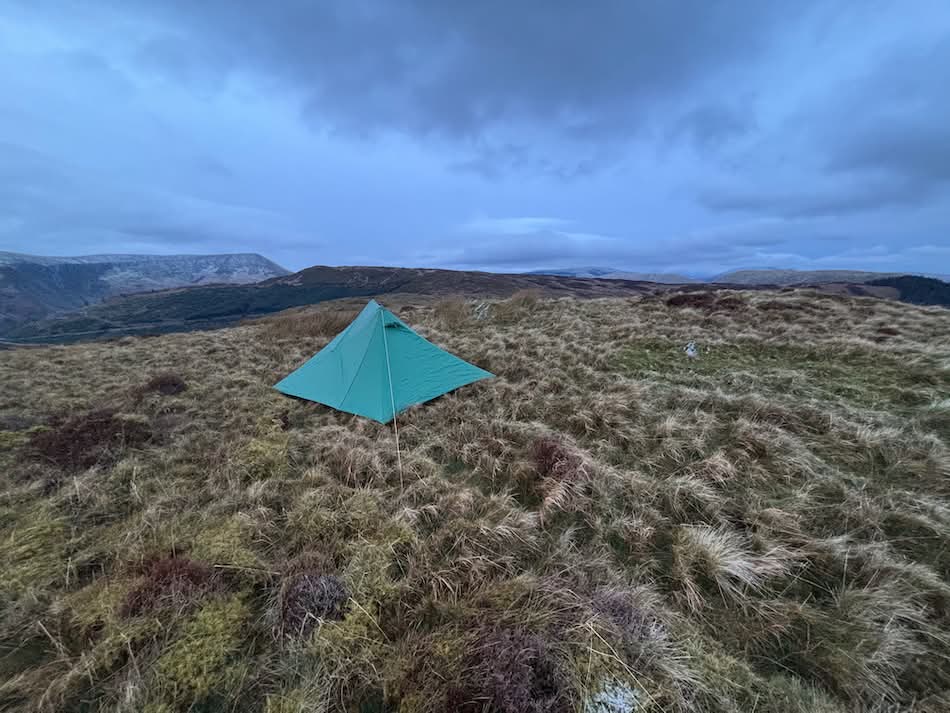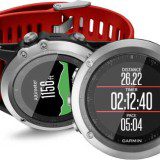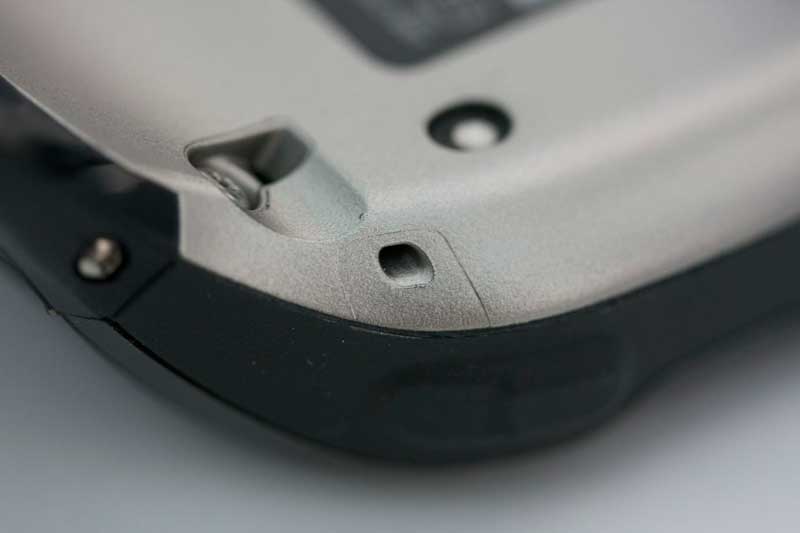Amber Warnings and Whiteout Nights: A Wild-Camp in the Dyfi Hills
I’d been meaning to get out for a wild camp for a while but hadn’t had the chance. So, when the forecast came in with amber warnings for snow and ice, it seemed like the perfect opportunity! Perfect, that is, with the relevant safety plans, backup strategies, equipment, and skills in place.
I decided against tackling some of the more significant Nuttalls still on my list and instead headed toward Maeseglas. At 697 meters, it’s the highest summit in the Dyfi Hills and one I had visited previously. However, after recent re-surveying, the summit is now thought to be the western top, not the one marked on OS maps. Naturally, I wanted to revisit it to tick it off my list properly.
Forecasts and Plans
The forecasts warned of snow and ice overnight on Saturday, turning to rain on Sunday. When I set off, a light covering of snow already blanketed the hilltops. With this in mind, I packed full winter clothing and aimed to reach the summit and return to lower levels before the snowfall began. My camping spot would ideally be close to the forest roads and the car, allowing for an easy descent if I needed to bail during the night.
Nant Minllyn and Foel Dinas
I parked in Dinas Mawddwy and began the walk uphill along a forest road, transitioning to a rocky path that climbed steeply to the old mine workings at Nant Minllyn. I explored a little here, spotting a couple of potential camp spots, but nothing stood out.
Continuing upward, I navigated through the mine’s various levels, scrambling up spoil heaps until I emerged onto the open hillside. From there, a narrow path through the heather led me to the first summit of the day, Foel Dinas (478 m).
It was a quiet, grey day—no wind, no sun, just views of snow-topped peaks ahead and the rugged Arans in the distance.
Maeseglas
Descending from Foel Dinas, I carefully picked my way through steep heather, avoiding slippery roots. In the saddle below, a massive scar from recent forestry operations interrupted the landscape—a road gouged through the hillside.
Crossing the road, I passed through a gate and began the steep climb toward Maeseglas. The stunning Maesglas Waterfall tumbled dramatically down the cliffs to my right.
Christmas indulgences and a recent lack of exercise made this climb more challenging than I’d like to admit! By the time I reached the top, I was above the snowline, though the light covering didn’t obscure the path. Following fox tracks in the snow, I paused to photograph the waterfall from above before continuing along the escarpment.
The tracks led me past the old summit of Maesglas (674 m) to the new high point (679 m). It was difficult to pinpoint the exact summit, so I wandered around with my GPS to make sure I’d bagged it. Lunch in the snow was a quiet affair, with views of the Arans to the north and Cadair Idris to the west.
Exploring
Initially, I planned to retrace my steps to the car and find a nearby camp spot. However, the fox tracks continued along a fence line heading southeast toward the forestry I had climbed beside earlier. Deciding to follow the tracks instead, I bagged the summit of Maesglasau (674 m) before gingerly descending slippery slopes back to the forestry road scar.
Hoping for an alternative route, I explored the road around the hill but found none. Begrudgingly, I climbed back up Foel Dinas and returned to the mines. Tired and with sore toes from the descents, I had one last potential camp spot to check out on a ridge above the mines.
Extreme Camp
First, I descended towards the mines to collect some water and then headed up onto the ridge and searched around for a while. Nowhere was perfect but I found a flattish spot and set up my tent.
It was a little more exposed than I would have liked but would have to do. As dusk fell, I had some food as the wind started to pick up and it started snowing.
Wrapped up warm in my tent I was quite cosy though – and the nose-scarf that Anna bought me for Christmas got its first outing!!
It wasn’t long before it was blowing a hoolie and I was surrounded by white. The snow was blowing in under my flysheet and covering everything so I turned my boots upside down to stop them from filling with snow. The wind was ripping at the tent and a couple of the lines kept slipping, forcing me to make adjustments and eventually tie knots in the corner lines to stop them from slipping.
At some point, the snow turned to freezing rain, encasing everything—including my tent—in thick layers of ice. Opening the zip the next morning was a struggle, and clearing the ice off the guy lines and buckles was tedious work.
Clearing it off was a thankless task as no sooner had I cleared it, the rain would coat it once again and within minutes it would be thick with ice again. The guy lines and buckles needed to be cleared of ice to pack them away though. The only way to get it off was to gnaw at the ice with my teeth!
Eventually I managed to get the tent packed away but not without taking a considerable amount of ice with it. I put it all in a pack-liner and shoved it into my pack noting just how heavy it was. Once back at home I weighed it and the tent weighed in at just over 4 kg – That’s 3 kg of ice that I brought home with me!
Once packed up it was a short descent over slippery slopes to the forest track and then a descent to the car.
I’m not sure how cold it actually got overnight, but it was well below freezing. I’m not sure how strong the winds were either but they were significant. The tent did well.



























As I said on messenger to you whilst you are in your tent Crazy mad fool